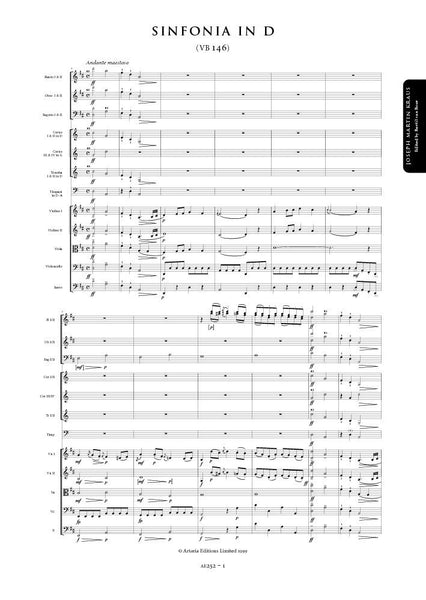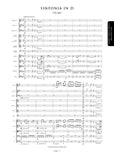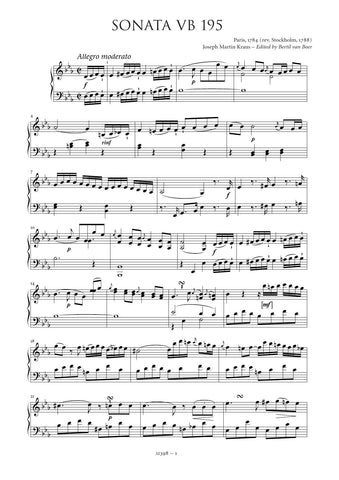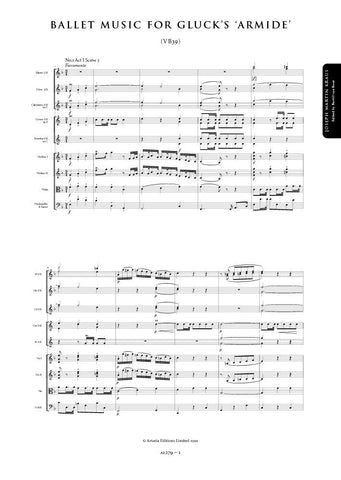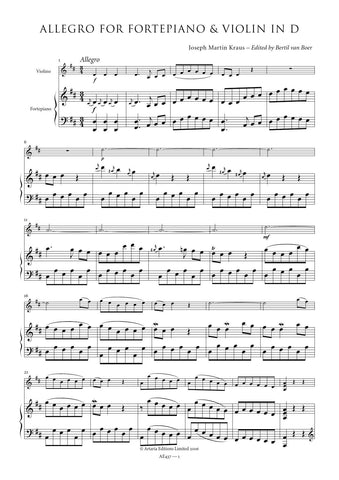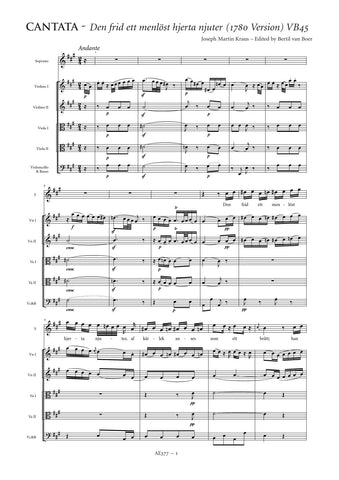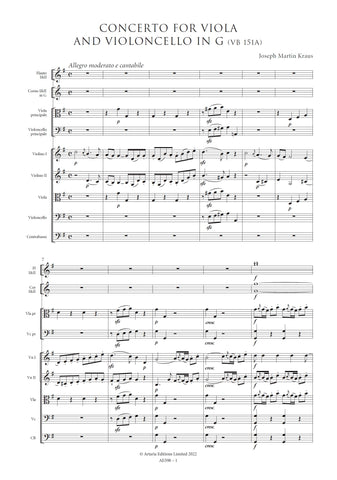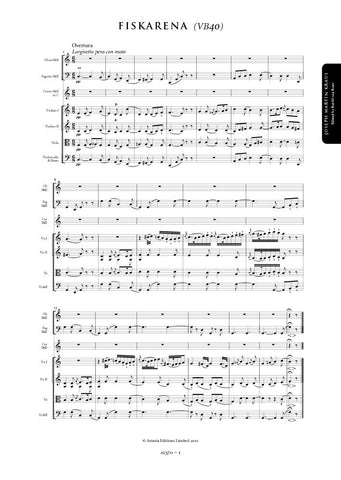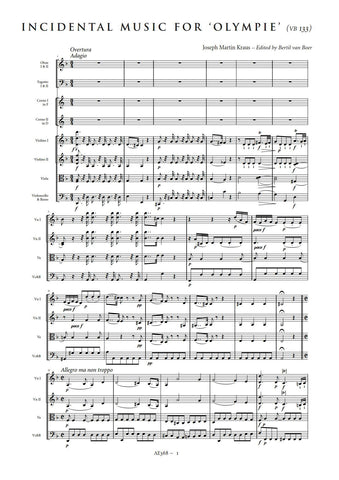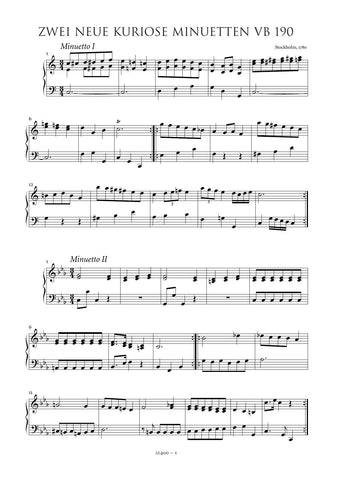Kraus, Joseph Martin: Sinfonia in D major Riksdagssymfoni (VB 146) (AE252) – sheet music
Previous Product Next Product
Description |
Kraus, Joseph Martin (1756-1792)
|
||||||||||||||||||
Audio sample |
|||||||||||||||||||
Details |
This work was composed as part of the incidental music for the convening of the Swedish parliament in March of 1789. Gustav III had entered into a controversial war with Denmark and Russia a year earlier, and despite early victories the conflict had stagnated. The King was in dire need of further finances to continue the war but was keenly aware that opposition to his plans had developed among the restive landed nobility and clergy. In order to further his aims, he intended to have the parliament approve of the Act of Union and Security that would give him broad powers over the administration of the government, the exchequer, official appointments, and legislative initiative. Because the war was popular with the Swedish public, he rallied their support in a display of power and spectacle that was calculated to override the opposition, cowing them into rubber stamping his wishes. Kraus, an ardent monarchist, was given the commission to compose music for the opening ceremonies in the St. Nicolai Church on March 9, 1789 consisting of a grand processional followed by an extensive church symphony. The effect must have contributed to the power and majesty Gustav sought to display, for the opposition was so disconcerted that his legislation was approved without delay, setting the stage for a successful conclusion to the war along with the seeds of his own assassination some three years later. In order to set the tone for this momentous occasion, Kraus chose an older form that could display the pomp, majesty, and, hopefully, the triumph of the monarch, as well as contain allusions to royal music of the political powers of Europe. The work is a sinfonia da chiesa, the sacred equivalent of the old-fashioned French overture. It consists of a single, large-scale movement; a lengthy introduction in a slower tempo followed by a powerful sonata-form fugue. Because the formerly absolute monarchy in France was falling on hard times - only four months later the Revolution against the weak and corrupt regime of Louis XVI would begin - Kraus chose to minimize the expected dotted rhythms of the French overture. Instead, he chose a more fluid lyrical opening, which reinforces the powerful octave unisons both at the beginning of the work and throughout the main section. The fugue itself is a rare example of a complex piece of counterpoint that is shaped into a sonata form, replete with internal thematic development and majestic fanfares. Towards the end of the recapitulation, a typical Krausian trademark of stabilizing the key through a dominant pedal in the basses and timpani prepares the work for a dramatic conclusion whose writing for woodwinds anticipates Beethoven. Biographer Fredrik Silverstolpe, now in the Uppsala University Library (Capsula 28), preserves the conclusion. In keeping with Kraus's extremely precise notation, little regularisation or emendation has been needed; instances where there are differences in parallel passages are seen as deliberate alterations by the composer and have been retained in this edition. The horn and trumpet clefs have been modernised to treble from their original C clef notations, although this does not affect their actual transposing notation in the original. Appoggiaturas are given by Kraus consistently as eighth or sixteenth notes, to be performed as grace notes if the principal note to which it is attached is not evenly divisible, as equal length if it is. Only in one place does there exist an orchestrational anomaly; in bar 19 the contrabass part has a low BB, which is impossible on modern instruments. Since Kraus is an unusually careful composer, this note must be seen either as meant for an instrument that had an extra low string (tuned to BB; Kraus regularly requires contrabasses with C strings) or that the composer momentarily wrote at sounding instead of written pitch. The latter explanation has been accepted for this edition. The comment by the composer at the end of the introduction, s'attacca il seguente Allegro senza rit., implies that normal performance practice during that period would have involved a ritardando between the sections to differentiate them, something Kraus clearly wished to avoid. Bertil van Boer |
||||||||||||||||||
Performance |
18 January 2013
Conductor: Masaaki Suzuki
Tokyo City Philharmonic Orchestra
Tokyo Opera City - Tokyo - Japan
______________________________ 11 November 2012 Conductor: Carlo Jans Orchestre de Chambre du Luxembourg Schloss Sayn - Altenberg - Germany ______________________________ 4 November 2012 Conductor: Carlo Jans Orchestre de Chambre du Luxembourg Differdange - Luxembourg ______________________________ 3 July 2011 Conductor: Nicolas Brochot Orchestre de Chambre du Luxembourg Pfarrkirche - Mayen - Germany ______________________________ 30 March 2011 Conductor: Sakari Oramo Finnish Radio Symphony Orchestra Johannes Churchat - Helsinki - Finland ______________________________ 17 December 2010 Conductor: Roland Kluttig Norrköpings Symfoniorkester Linköping - Sweden ______________________________ 16 December 2010 Conductor: Roland Kluttig Norrköpings Symfoniorkester Linköping - Sweden ______________________________ 16 December 2010 15 December 2010 Conductor: Sakari Oramo Royal Stockholm Philharmonica Orchestra Great Hall - Stockholm - Sweden ______________________________ 21 November 2010 Conductor: Bramwell Tovey Helsingborgs Symfoniorkester Konserthus - Helsingborg - Sweden ______________________________ 24 November 2007 Conductor: Mats Rondin Gävle Symfoniorkester Konserthus, Gevaliasalen - Gävle - Sweden |




